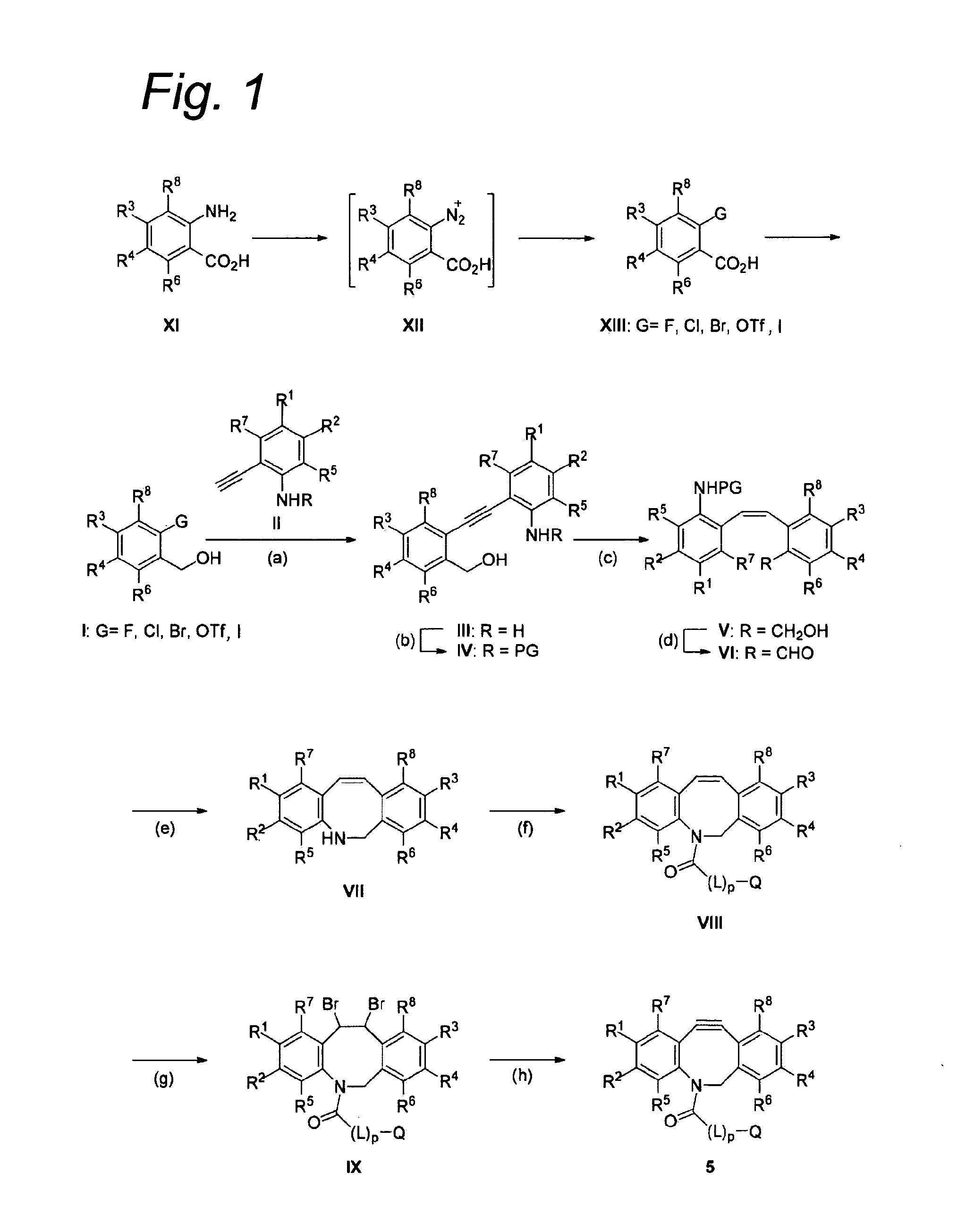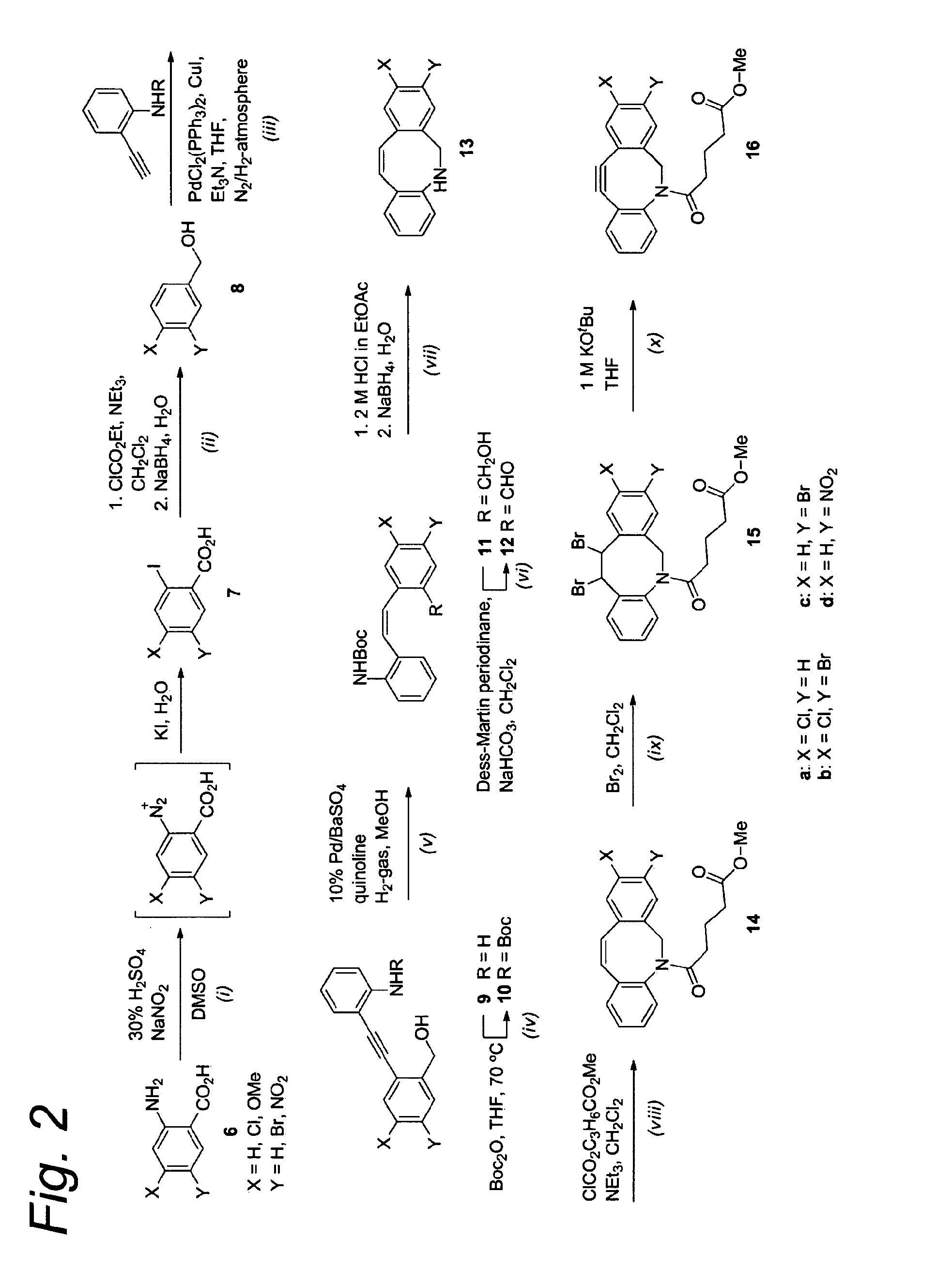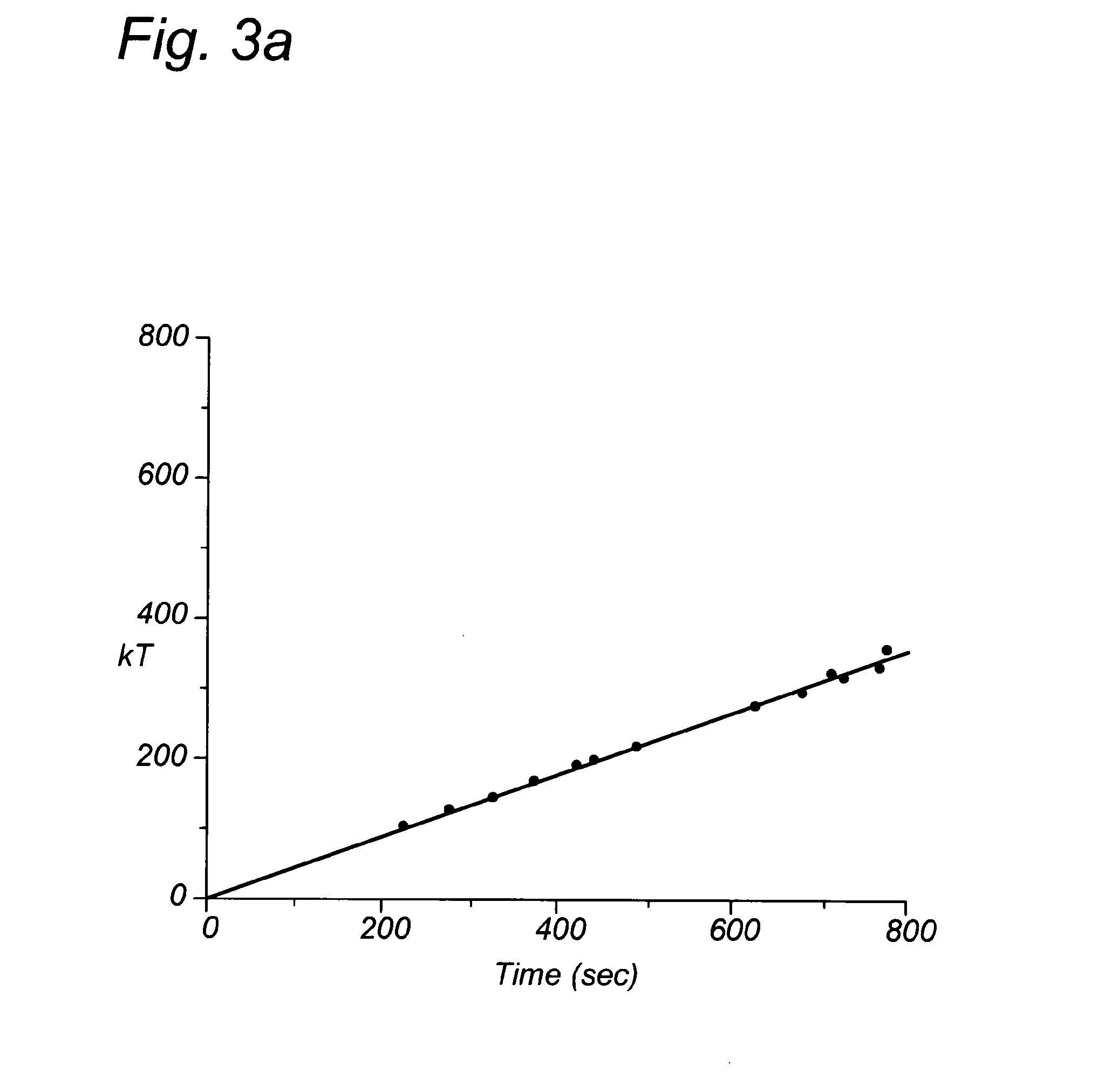Substituted azadibenzocyclooctyne compounds and their use in metal-free click reactions
a technology of azadibenzocyclooctyne and substituted azadibenzocyclooctyne, which is applied in the direction of aminosugar, sugar derivatives, radiation therapy, etc., can solve the problems of low stability, the vast majority of such reactions can only be performed under strictly anhydrous conditions, and the reaction can still only be applied in vitro
- Summary
- Abstract
- Description
- Claims
- Application Information
AI Technical Summary
Benefits of technology
Problems solved by technology
Method used
Image
Examples
example 1
5-Chloro-2-iodobenzoic acid (7a)
[0104]2-Amino-4-chlorobenzoic acid (6a, 10.0 g, 58.2 mmol) was dissolved in DMSO (100 mL), and 30% H2SO4 was added (100 mL). The solution was cooled to 0° C., whereupon NaNO2 (8.8 g, 129 mmol) was added. The reaction was stirred for two hours at room temperature, after which a solution of KI (19.3 g, 106 mmol) in H2O (50 mL) was added. After one hour, an additional portion of KI (9.7 g, 58.2 mmol) in H2O (25 mL) was added. In addition, DMSO (50 mL) was added to keep the reaction mixture solubilized. After one additional hour, EtOAc (300 mL) was added, and the organic layer was washed with H2O (3×200 mL) and brine (200 mL), and subsequently dried over MgSO4. The solvents were removed in vacuo to obtain crude 7a as white solid. 7a was not further purified and used as a crude in the following reaction. 1H-NMR (400 MHz, CD3OD) δ: 8.01 (d, J=2.1 Hz, 1H), 7.76 (d, J=8.4 Hz, 1H), 7.45 (dd, J=8.4, 2.1 Hz, 1H). 13C-NMR (75 MHz, CD3OD) δ: 168.9, 141.7, 138.6, 1...
example 2
2-Amino-4-bromo-5-chlorobenzoic acid (6b)
[0105]2-Amino-4-chlorobenzoic acid (1.1 g, 6.4 mmol) was dissolved in acetic acid (8 mL) and Br2 (0.33 mL, 6.4 mmol) was added. The mixture was stirred at room temperature for 4 hours and subsequently poured into saturated aqueous NaHSO3 (50 mL). The H2O-layer was extracted with EtOAc (2×50 mL), and the combined organic layers were washed with water (2×50 mL), brine (50 mL), and subsequently dried over MgSO4. The solvents were evaporated under reduced pressure to obtain 6b as a mixture of two products. 6b was not further purified and used as a crude in the following reaction. 1H-NMR (400 MHz, CD3OD) δ: 8.00 (s, 1H), 6.92 (s, 1H).
example 3
4-Bromo-5-chloro-2-iodobenzoic acid (7b)
[0106]Crude 2-amino-5-bromo-4-chlorobenzoic acid 6b (6.0 g, 24 mmol) was dissolved in DMSO (100 mL) and 30% H2SO4 (100 mL) and the resulting mixture was cooled to 0° C. NaNO2 (3.6 g, 53 mmol) was added and the mixture was stirred for 2 hours at room temperature. After this time, a solution of KI (8.0 g, 48 mmol) in H2O (40 mL) was added. After one hour an additional portion of KI (4.0 g, 24 mmol) in H2O (20 mL) was added. After one more hour, EtOAc (200 mL) was added, and the organic layer was washed with H2O (2×200 mL) and brine (200 mL), and dried over MgSO4. The solvents were removed in vacuo to obtain 7b as a mixture of two products. 7b was used as a crude in the following reaction. 1H-NMR (400 MHz, CD3OD) δ: 8.16 (s, 1H), 8.07 (s, 1H).
PUM
| Property | Measurement | Unit |
|---|---|---|
| Pharmaceutically acceptable | aaaaa | aaaaa |
| Dipole | aaaaa | aaaaa |
Abstract
Description
Claims
Application Information
 Login to View More
Login to View More - R&D
- Intellectual Property
- Life Sciences
- Materials
- Tech Scout
- Unparalleled Data Quality
- Higher Quality Content
- 60% Fewer Hallucinations
Browse by: Latest US Patents, China's latest patents, Technical Efficacy Thesaurus, Application Domain, Technology Topic, Popular Technical Reports.
© 2025 PatSnap. All rights reserved.Legal|Privacy policy|Modern Slavery Act Transparency Statement|Sitemap|About US| Contact US: help@patsnap.com



